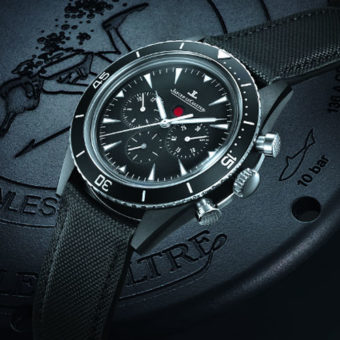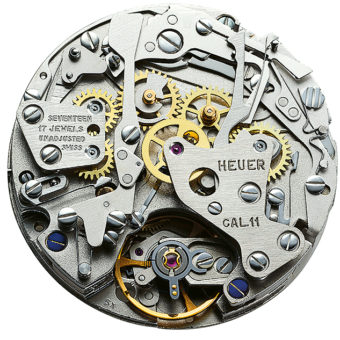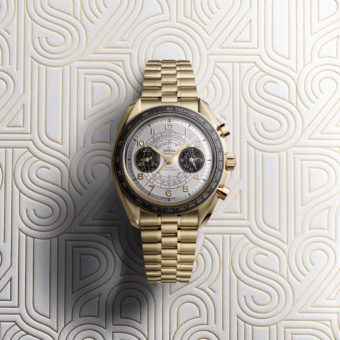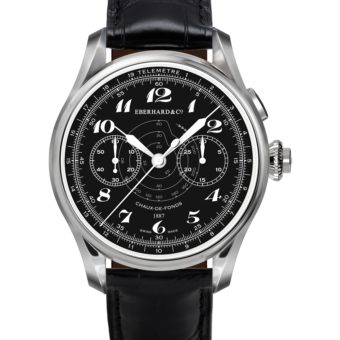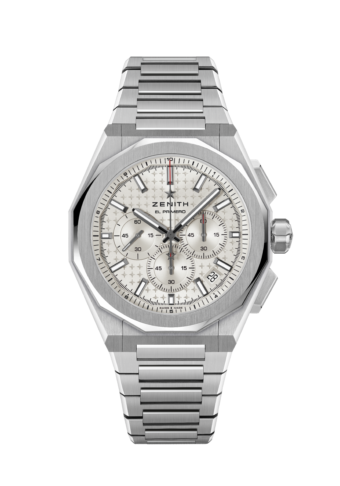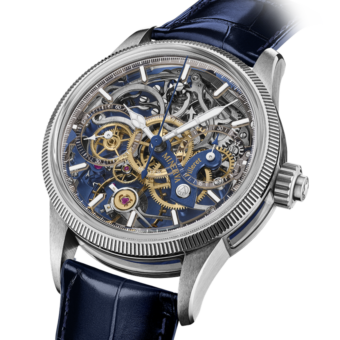This article was originally published in the September/October 2022 Issue of the WatchTime print magazine.
Over the years, IWC has become almost synonymous with pilot watches. The Swiss brand’s current squadron of horological aces is divided into a “Classic” segment (with the Heritage and Spitfire models), “Performance Materials” (with Top Gun, Pantone and various other special editions) and “Saint-Exupéry” (with Le Petit Prince and Antoine de Saint-Exupéry models). In other words, customers can, for example, choose among the classic, 40-mm Mark XVIII in stainless steel with black dial and matching leather strap (Ref. IW327009), a heritage Mark XVIII in titanium with brown leather strap (IW327006), a 39-mm bronze pilots’ watch (IW326802) in the Spitfire segment, a 41-mm ceramic Mark XVIII Top Gun Edition “SFTI” (Ref. IW324712), and a 40-mm Mark XVIII “Le Petit Prince” Edition with stainless-steel case, blue dial and brown leather strap (Ref. IW327010). Think of it like the Sikorsky UH-60 Black Hawk made for the Army, the Sea Hawk for the Navy, the Jayhawk for the Coast Guard and the elusive Stealth Hawk for the SEALs — same airframe, different purpose.

From a consumer’s point of view, more choice usually is an advantage, but it is worth noting that every material has its unique characteristics. The most common option, stainless steel, for example, is comparatively easy to work with; it allows different surface treatments and is generally quite resistant to acidic corrosion. And it goes with almost anything. Titanium, on the other hand, is around 50 percent lighter than stainless steel, has a higher anti-magnetic resistance, and is more durable against impacts and saltwater. As a result, titanium is also a bit more complicated to work with (hence the often-higher price tag), and not everyone wants a luxury watch to feel less hefty on the wrist, or to come with a slightly grayish color. Even more so with bronze. There is a practical reason why diving helmets and ship propellers are usually made from this alloy — the dark patina provides a highly protective covering to materials that would otherwise be damaged by corrosion or weathering over time. When used for watch cases, people ideally should know about the quickly darkening color before the purchase, others simply might not like the comparatively bitter smell of the alloy. Considering how bronze watches took off almost vertically in the past years — the organic look and individual aging process seem to have won this proverbial dogfight — bronze is here to stay.
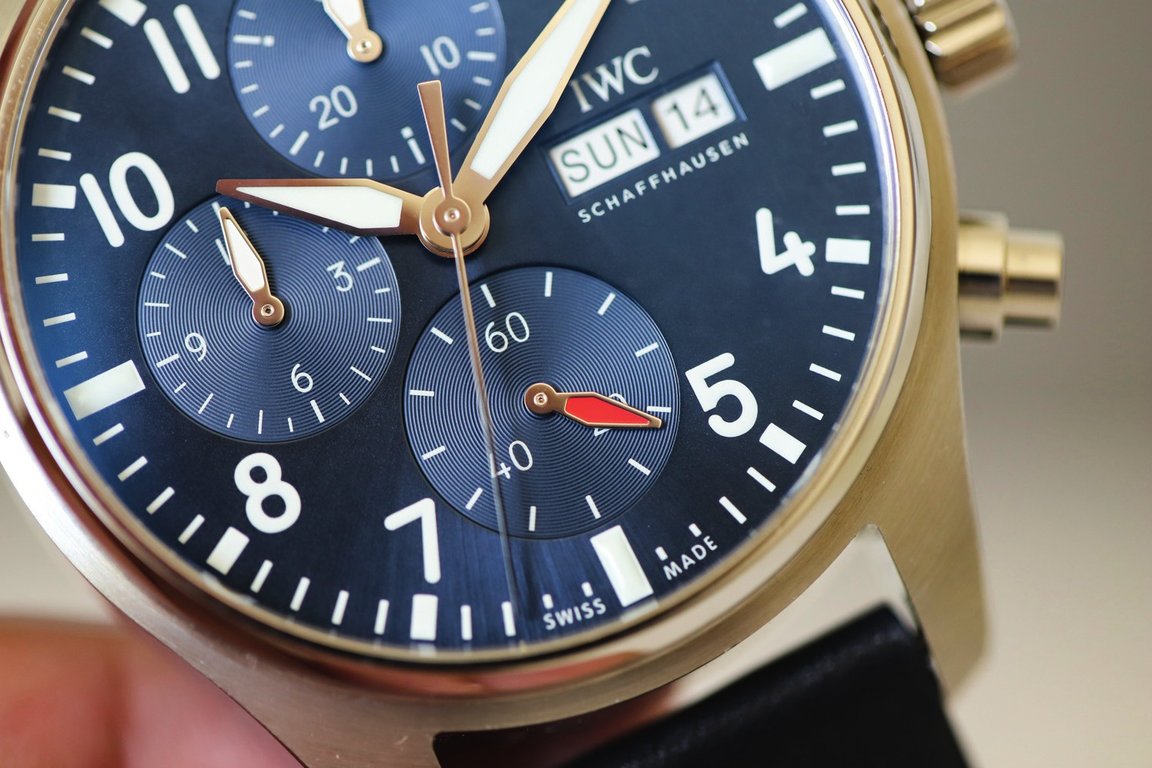
For those looking for a watch with a completely black watch case, a DLC (diamond-like carbon) or PVD (physical vapor deposition) coating is theoretically more scratch resistant than regular steel or titanium, but scratches can’t be buffed out, which will ultimately complicate things during future restorations (which is why IWC is no longer using these coatings). A ceramic case, however, will not lose its color. On top of that, ceramic is lighter than most metals, making it comfortable and light on the wrist, and the material is hypoallergenic (metal hypersensitivity or metal allergies are quite common). But it gets even better: ceramic is also extremely (but not completely) scratch resistant, making it, next to sapphire, one of the hardest materials for watches currently available. Unfortunately, ceramic also tends to be quite brittle, which means a belly landing is even less recommended.

In the last 86 years, IWC has been making pilot watches in stainless steel, platinum, white, rose or yellow gold, ceramic, carbon, titanium or bronze. More recently, to be precise since 2017 with the introduction of the Aquatimer Perpetual Calendar Digital Date-Month Edition “50 Years Aquatimer“ (Ref. IW379403), the watchmaker has started to roll out its own proprietary material, Ceratanium (combining the two words “ceramic” and “titanium”). It debuted in the IWC Pilot’s Watches collection with the Pilot’s Watch Double Chronograph Top Gun Ceratanium in 2019 (Ref. IW371815). This year, the Pilot’s Watch Chronograph 41 Top Gun Ceratanium (Ref. IW388106) became the first 41-mm chronograph in this collection with a case, pushers and a crown made entirely out of the novel material.

Back in the 1970s, IWC began to intensify its research to find ways of improving existing materials and exploring the use of new ones (even aluminum at some point). One such project aimed to increase the scratch resistance of relatively soft stainless steel by hardening it with tungsten carbide for the Edison Electronic (Ref. IW3402). As part of the collaboration with the Porsche Design studio, titanium soon came to the attention of the engineers. In 1980, IWC unveiled the Porsche Design Titanium Chronograph (Ref. IW3700) — while not the world’s first titanium watch, it was still the first wristwatch made with a titanium case and integrated titanium bracelet (and titanium became a bit of a signature metal in the following years). The next premiere didn’t take long: in 1986, the Da Vinci Perpetual Calendar was the first wristwatch with a case made of black (later also white) zirconium oxide ceramic (Ref. IW3755).

Fast forward to 2017. With Ceratanium, IWC’s own “Skunk Works” engineers have developed “a groundbreaking new material that combines the unique advantages of titanium and ceramic, including their extreme corrosion resistance.” And the fact that parts, such as the crown, pushbuttons and buckle, can also be made from Ceratanium has made it possible to produce watches in a sumptuous, matte, all-black design without the need for coating or using other materials.

The dark and slightly metallic shade results from a unique manufacturing process: it develops on the surface of the material when the case components are fired at a precisely defined temperature for a set amount of time in a kiln. When certain process parameters are reached, oxygen diffuses into the material, resulting in a phase transformation. The surface then takes on properties similar to those typical of ceramics, such as a high degree of hardness and scratch resistance. Ceratanium is not a mixture of titanium and ceramic, it is rather a new material developed from scratch, based on a unique titanium alloy smelted according to IWC’s specifications. Various case components, such as the casing ring and caseback, the crown and push-buttons, are turned and milled from bars and flat sections of this alloy. Finally, the surfaces are sandblasted by hand to give the parts a matte surface.

Among IWC’s iconic Pilot’s Watches, like the Big Pilot, Mark XVIII and Double Chronograph, the standard chronograph with three subdials can perhaps be categorized as the most versatile horological wingman of them all. The subdials alone bring this typical cockpit look to the wrist, and the chronograph undoubtedly is one of the most useful complications for everyday use, especially with a diameter that should work for just about anyone (lug-to-lug length is 50.8 mm).

As a result of the success of the slightly smaller 41-mm Spitfire chronographs from 2019, IWC introduced the Pilot’s Watch Chronograph 41 into its classic collection last year (also see WatchTime’s February 2022 issue). Equipped with the brand’s quick-change strap system, a now 10 bar waterresistant case and in-house 69385 caliber chronograph movement, the watch was initially launched with a blue or green dial with sunray finish (Ref. IW388101 and IW388103 with calfskin strap). For 2022, IWC added not only the Ceratanium version, but also a striking bronze version with a blue dial, subdued beige printing and gold-plated hands. Alongside copper, the bronze used here also contains aluminum and iron. According to IWC, this specific composition makes the alloy around 50 percent harder than standard bronze. Developing more patina over time, the contrast to the polished gold-toned hands will therefore increase. All watches come with a sapphire caseback (the Ceratanium version with a tinted crystal). Purists might miss the traditional soft-iron inner case and solid caseback; others will appreciate the chance to see this engine at work.

While the 41-mm stainless-steel versions already represent the most versatile and accessible options (with prices starting at $6,700), the matte black Pilot’s Watch Chronograph 41 Top Gun Ceratanium undoubtedly is the most innovative and utilitarian watch in the lineup. Needless to say, it is also one of the more sought-after pieces in the year that has finally seen the release of the one movie that will make more people fall in love with aviation and flying than any movie before. The bronze version ($7,300), on the other hand, offers one of the most interesting color combinations in this area, thanks to the beige and blue elements on the dial and the matching day-date indication. Regardless of the material, IWC has once again demonstrated why their Pilot’s Watches continue to enjoy air superiority.
To learn more about IWC, click here, and to subscribe to the WatchTime print magazine, click here.

